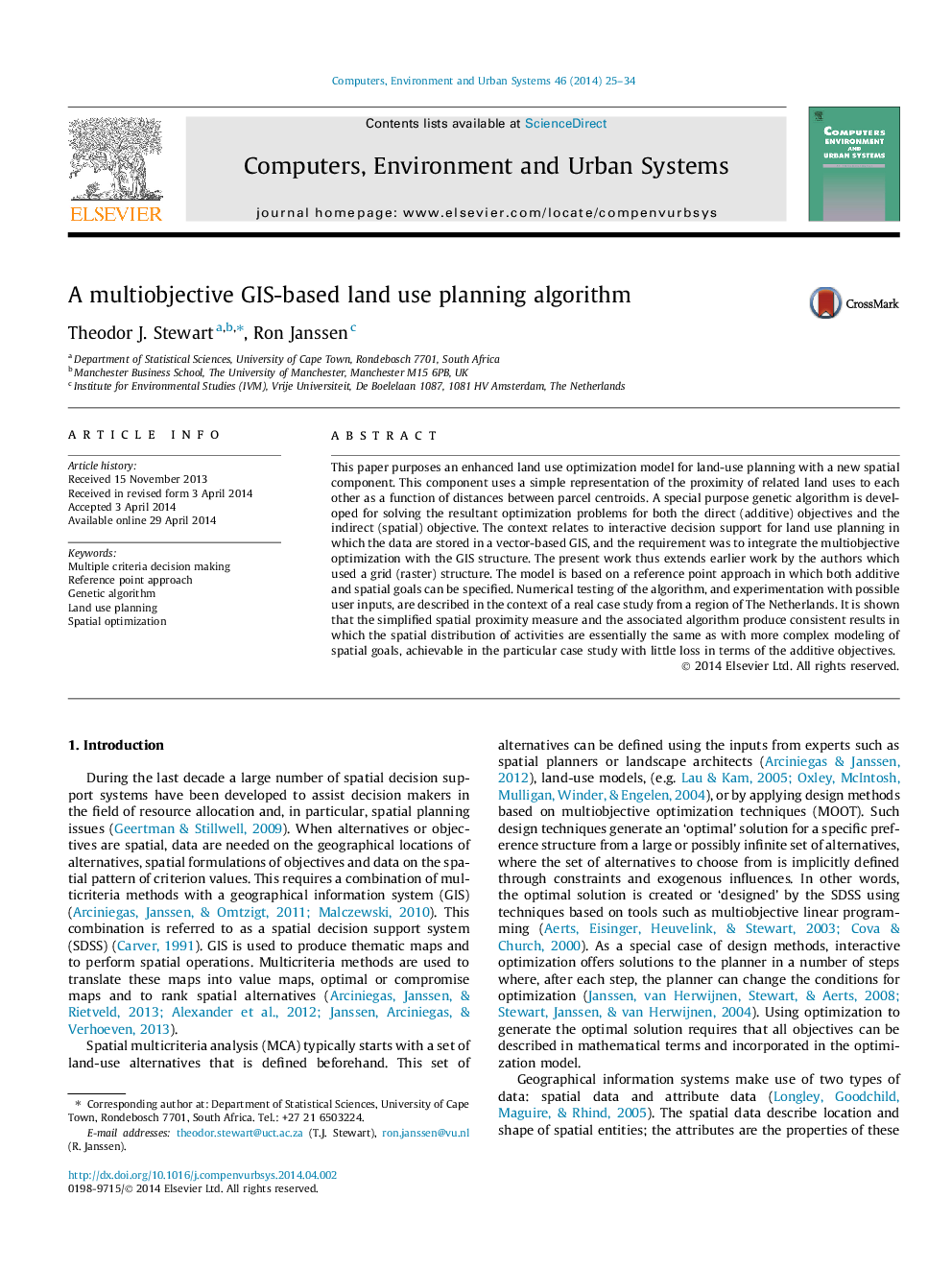| کد مقاله | کد نشریه | سال انتشار | مقاله انگلیسی | نسخه تمام متن |
|---|---|---|---|---|
| 506330 | 864895 | 2014 | 10 صفحه PDF | دانلود رایگان |
• We formulate land use optimization in terms of additive and spatial objectives.
• The optimization model is formulated to link with GIS structures.
• Objectives of spatial contiguity are represented by measures of proximity.
• A special purpose genetic algorithm is developed and numerically tested.
• The approach is applied to a planning problem in The Netherlands.
This paper purposes an enhanced land use optimization model for land-use planning with a new spatial component. This component uses a simple representation of the proximity of related land uses to each other as a function of distances between parcel centroids. A special purpose genetic algorithm is developed for solving the resultant optimization problems for both the direct (additive) objectives and the indirect (spatial) objective. The context relates to interactive decision support for land use planning in which the data are stored in a vector-based GIS, and the requirement was to integrate the multiobjective optimization with the GIS structure. The present work thus extends earlier work by the authors which used a grid (raster) structure. The model is based on a reference point approach in which both additive and spatial goals can be specified. Numerical testing of the algorithm, and experimentation with possible user inputs, are described in the context of a real case study from a region of The Netherlands. It is shown that the simplified spatial proximity measure and the associated algorithm produce consistent results in which the spatial distribution of activities are essentially the same as with more complex modeling of spatial goals, achievable in the particular case study with little loss in terms of the additive objectives.
Journal: Computers, Environment and Urban Systems - Volume 46, July 2014, Pages 25–34
